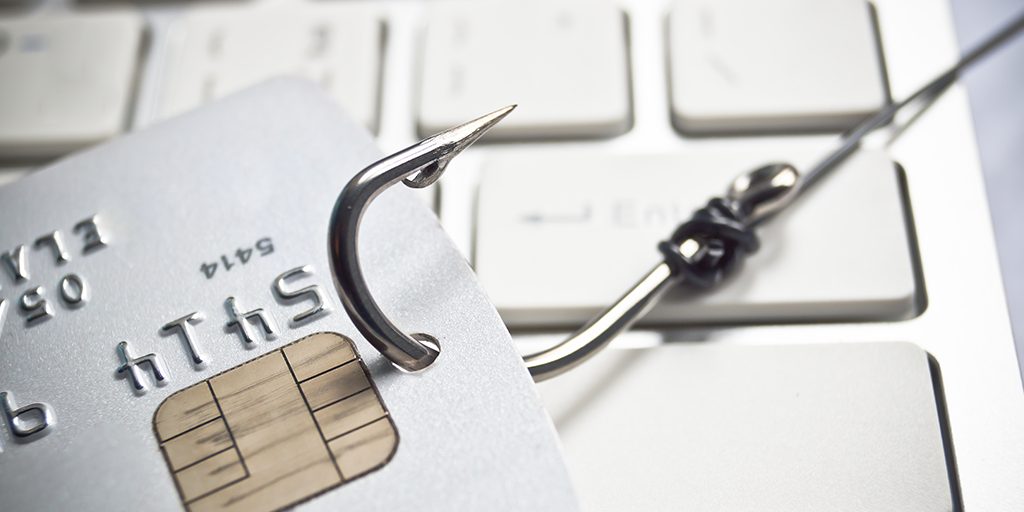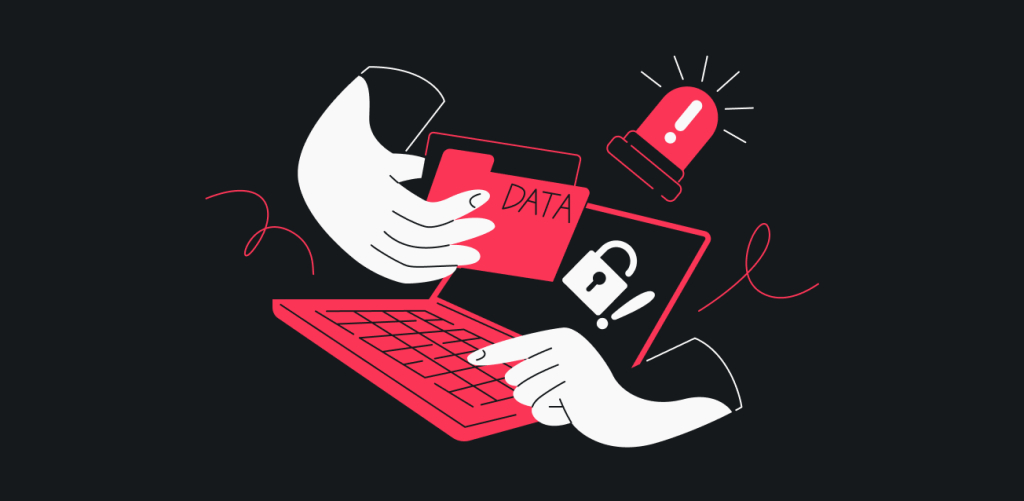Recent cases of digital payment fraud have surged, turning everyday transactions into potential nightmares. Think it can’t touch you? Think again. With each swipe, tap, or click, your hard-earned money could be slipping into a cybercriminal’s pocket. In this age where buying a coffee or shopping online seems like second nature, hackers are also evolving, becoming digital pickpockets in a world gone virtual. I’ll walk you through the murky waters of today’s fraud tactics and the high-stakes game of defending against them. From sneaky phishing to full-blown cyberattacks, the risks are real. But don’t worry, you’re not alone. Arm yourself with knowledge and turn the table on these digital thieves. Ready to secure your transactions and fight back? Keep reading.
Understanding the Changing Landscape of Digital Payment Fraud
Rise of Mobile Payment Security Breaches
Lately, folks are facing more mobile payment security issues. If you use smartphone apps for money matters, listen up. Bad guys find new ways to break into these apps daily. They are getting smart at sniffing out weak spots in mobile payment apps. What’s worse, they steal card details without you knowing. From there, they can do unauthorized shopping on your dime.
Scammers are now a big headache for e-wallets. E-wallets are handy, right? You tap to pay or send cash in seconds. But here’s the catch: with every tap, there’s a risk. Cyber-thiefs can swipe your info with sneaky software. Think of it like a pickpocket, but you don’t feel a thing. Your bank account might show charges for things you never bought. And by the time you spot this, the crooks are long gone.
The Evolution of Phishing Attacks and Their Impact on Consumers
Now, let’s chat about phishing attacks. Phishing is like fishing. But instead of fish, scammers are fishing for your personal info. They send fake emails acting like your bank or a shop you know. They make these emails look real good, so you click and enter your details. That’s when they gotcha.
These fake messages can fool anyone, from kids to your granny. For example, folks get emails saying they won a prize. Who doesn’t like winning? You click the link, and bam, they’ve got your info. Now, they can get into your accounts or even worse, pretend to be you and make fraudulent bank transfers.
Let’s not forget those credit card scams. You check your bill and see charges for stuff you never touched. It’s like a magic act; money vanishes from your card! That’s because these sneaky thieves put malware on store machines. When you swipe your card, they grab your card info.
So, what can we do? For starters, check your statements often. If anything looks funny, call your bank quick. Update your apps and gadgets, too. Keep them tough against hacks. And one more thing, always keep an eye out for strange emails or texts. If they ask for personal details, don’t bite. It’s probably a scam.
In all, you gotta be smart and stay alert. Scams and frauds in the digital payment world are morphing fast. Cybercriminals keep on inventing crafty ways to rip us off. By knowing their tricks, like phishing and malware, we can fight back. Keep your money safe, and don’t let the bad guys win. Remember, you’ve worked hard for that cash. Let’s keep it in the right hands – yours!
Anatomy of a Cyberattack: A Look into Recent Financial Crimes
Notable Cases of Compromised Payment Gateways and Virtual Currency Exploits
Money in the digital world is a target for thieves, just like in the real world. Online gates that move money can get hacked. Smart folks call this a ‘compromised payment gateway’. Bad guys sneak in, trick the system, and steal millions. Virtual coins, like Bitcoin, face threats too. These bad guys do a sneaky trick called ‘virtual currency fraud’. They fake identities or mess with the digital ledger to steal these coins.
Look at a recent case: criminals hacked a famous payment system. They took many users’ details and money. It shocked everyone, showing even big names aren’t safe. Another story tells of a popular virtual coin exchange that got cheated out of huge coin amounts. Hackers used smart tricks to pretend they were other people and grabbed the coins.
Banking Trojans and Man-in-the-Middle Attacks: Analyzing Real-Life Incidents
There’s a kind of virus called a ‘banking trojan’. It hides in your phone or computer. You won’t see it come in. It watches what you do with your bank online. Then, it sends your secrets to the thief.
Imagine you’re talking to your bank on the internet. A ‘man-in-the-middle’ attack is like a robber hiding unseeable between you two. It steals the info you send or changes it. It’s super tricky to spot. These bad guys have tripped up many good people. They’ve swiped money during these chats.
Here’s how it went down recently: someone’s banking app acted weird. They didn’t think much about it. But a banking trojan was there, watching. It sent their bank login info to the crooks. Those crooks got into their account and sent money out. Another time, a person thought they paid a bill online. But a man-in-the-middle was messing with the payment. The payment info got changed, and the money went to the crooks.
In these cases, the bad guys were thinking ahead. They found little cracks in how people pay on the net. They squeezed through and grabbed the money. These stories show why we must stay sharp. We need to keep an eye on strange things in our bank accounts or weirdness when we pay with our phones.
From these tales, we learn to be careful. To stop nasty surprises, we need to keep our guard up always. We should use stuff like two-step checks when we log in. This means even if crooks get our password, they can’t get in. Why? Because they won’t have the special code that gets sent to our phone.
So now, we know more about the slick ways bad guys take money on the net. Stay safe by watching out for odd emails or messages. Never give your money details unless you’re super sure it’s safe. And always double-check when you do money stuff online. Be the smart one who keeps their money safe!
Remember, if it feels odd, it might be a scam. Trust your gut and stay alert!
Defensive Measures Against Financial Cybercrime
The Role of Two-Factor Authentication in Preventing Fraud
Have you ever gotten a code on your phone to log in to your bank account? That’s two-factor authentication (2FA), a security must-have these days. It adds an extra step to keep bad guys out, even if they crack your password.
You should always turn on 2FA. It stops hackers since they need more than just your password. They also need your phone, which they usually can’t get. This simple step cuts down the risk of hacking a lot.
But know this – clever crooks can still get past 2FA. Sometimes, they trick you into sharing your 2FA code, or they could hijack your phone number. Yes, even this good guard isn’t perfect. So stay alert and never share your 2FA codes.
Implementing Biometric Security Measures: Successes and Pitfalls
Let’s talk about using your fingerprint or face to unlock your banking app. That’s biometric security, and it’s getting more popular for good reason. It’s unique to you, and hackers can’t guess it like a password.
Biometrics seem like the best way to keep your money safe, right? But here’s the twist – they’re not foolproof. High-tech crooks can sometimes fake your biometrics to break into your accounts. It’s scary but true!
So, while biometrics can stop a lot of fraud, they’re not unbeatable. Companies should mix it with other security types, like 2FA, to give you strong protection. And always be careful where you use your biometrics; use them with trusted devices only.
To sum it up, fighting fraud is a tough game. With the right tools, like two-factor authentication and biometric checks, we can give those sneaky cybercriminals a hard time. Always be smart, update your devices, and watch out for scams.
Staying Ahead of Fraudsters: Preemptive and Reactive Strategies
The Dangers of Card-Not-Present Fraud and How to Counteract It
We all shop online. It’s easy, fast, and can be done from anywhere. But did you know online shopping can expose you to card-not-present fraud? This fraud happens when thieves get your card details and use them without needing the card. It’s common and can affect anyone.
What is card-not-present fraud?
It’s when someone uses your card info to make purchases without the card itself. They don’t need the physical card, just the numbers.
How do cybercriminals get card details?
They can trick you into giving them away or steal them through data breaches or malware. This is why it’s crucial to guard your card info like a treasure.
Can this happen to me?
Yes, it affects a lot of people. Whether you’re tech-savvy or new to online shopping, these cyber thieves don’t discriminate.
How can I fight back?
Use secure websites for shopping. Look for a padlock symbol or “https” in the web address. Check your bank statements often. Alert your bank if you spot charges you didn’t make.
Remember, while banks often catch fraud, you’re the first line of defense.
Preventative Measures to Protect Against the Next Wave of Digital Wallet Thefts
Digital wallets are super handy. They store your payment info on a device like a phone. But when thieves target these wallets, your info can be at risk.
What are digital wallet thefts?
This is when thieves access your digital wallet and steal your money or info. They may trick you into downloading a fake app or use malware to hack into your device.
How can I keep my wallet safe?
First, only download apps from trusted sources. Don’t click on links from strangers. Keep your devices updated. New updates can fix security problems that thieves exploit.
Could my wallet be at risk now?
If your device isn’t secure, yes. But taking steps to protect it can help a lot.
What should I do if my wallet is hacked?
Change your passwords and tell your bank right away. Quick action can limit the damage.
Each bit of effort you put into security takes power away from cybercriminals. Stay alert and keep your money safe. It’s a digital world we live in, and it’s worth keeping it secure.
In this post, we dove into the shadowy world of digital payment fraud, breaking down mobile security breaches and phishing’s evolving threat. We looked at financial cyberattacks, detailing high-profile payment gateway breaches and virtual cash exploits, and we explored the deviousness of banking Trojans and real-world hacker tactics.
I shared how two-factor authentication and biometric security help shield your money, yet I was honest about their limits. Lastly, we unpacked strategies to fend off card-not-present theft and future digital wallet crimes.
Just remember: staying safe isn’t just about beating today’s fraud; it’s about prepping for tomorrow’s tricks, too. Stay smart, stay updated, and you can stay one step ahead of the bad guys.
Q&A :
What are some recent cases of digital payment fraud?
There have been various instances of digital payment fraud that have come to light recently. These cases often involve phishing scams, unauthorized transactions through mobile payment apps, the use of malware or spyware to steal personal information, SIM swap scams, and the exploitation of weak points in digital payment systems and networks.
How does digital payment fraud typically occur?
Digital payment fraud can occur in multiple ways. Often, it involves cybercriminals obtaining sensitive personal information such as banking details or passwords through deceptive means, such as fake emails, texts, or phone calls (phishing), or by installing malicious software on a victim’s device. Once they’ve gained access, they can make unauthorized transactions or transfers.
What are the warning signs of digital payment fraud?
Warning signs of digital payment fraud include unexpected emails or messages asking for personal or financial information, unauthorized transactions on your bank statements, or alerts from your bank or payment service provider about suspicious activity. It is also suspicious if you receive a request to verify your account or change your password without having initiated the process.
How can I protect myself from digital payment fraud?
To protect yourself from digital payment fraud, always use strong, unique passwords for each of your accounts, and enable two-factor authentication where available. Be wary of unsolicited requests for personal information and never click on suspicious links or attachments. Also, regularly review your bank and payment app statements for any unauthorized transactions.
What should I do if I fall victim to digital payment fraud?
If you suspect you are a victim of digital payment fraud, act immediately. Contact your bank or the digital payment service to report the fraud and request to freeze or secure your accounts. Change your account passwords, and monitor your financial statements closely. It’s also advisable to report the incident to your local authorities and consider a credit freeze if necessary.






